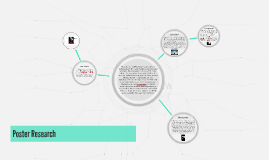Background for my Research
Transcript: Women most often stated that they were notified of their diagnosis via a letter sent in the mail. The women that were informed via phone spoke to an uninformed office staff member rather than their healthcare provider. Implications for Nursing Practice Population: female participants over the age of 18 (but under the age of 41) diagnosed with HPV in the Tri-Cities area of East Tennessee and Southwest Virginia Instrument: Online self-completion questionnaire containing both quantitative and qualitative questions regarding demographic data and HPV Data Collection: Surveymonkey.com was used because of it's ability to create a secure sockets layer encryption to keep the results and person completely anonymous. Data Analysis: IBM Statistical Product and Service Solutions (SPSS) was used to analyze the quantitative results and the qualitative data was thematically analyzed via the standards developed by Braun and Clarke. Literature Review Quantitative Results In order to ensure reliable and valid results, SurveyMonkey.com was programmed to eliminate individuals who did not meet the inclusion criteria by ending their survey early and thanking them for their participation. Surveys of Women with Human Papillomavirus and their Healthcare Experiences "I sat there feeling gross and helpless while the doctor seemed not to care. I was crying and she made me feel like complete shit by her attitude. I had so many questions that she did not answer. Granted, I did not ask many questions at the time because I was still shocked to learn I had an STD. I had recently been sexually assaulted by two different guys at a party and was feeling the anger and hurt all over again. While I don't remember if she knew this information, I really needed some emotional suppoer and she seemed overall unfazed by my diagnosis." There were a number of limitations present in this study, but the two biggest were: 1. It may have been useful to also interview healthcare providers about the initial consultation to receive a more balanced perspective Catherine Cook, a researcher at the University of Auckland in New Zealand, conducted in-depth research on the psychosocial effects of sexually transmitted infections including HPV. Her doctoral thesis, The Pedagogy of the Clinic: Health Professionals and Women with Viral Sexually Transmitted Infections, was the study I used as the foundation for my study. "The health department makes you think you have cancer when they inform you that you have HPV. I don't think they should scare us into thinking we need unnecessary procedures for mild dysplasia." Individualized Needs It is estimated that as many as 80% of sexually active women will be positive for HPV at some point in their lives and healthcare providers need to be mindful that a large portion of those women are utterly unaware of what HPV is (Akyuz, Yilmaz, Yavan, & Kilic 2011). "When the office staff member called me she was unable to answer any of my questions about HPV. I was frustrated. I called back to ask more questions, but the staff member was unable to answer anything. I was told to come back in three months. I then called a friend who is a women's health nurse practitioner to get information." Discussion Methods Important Background for this Study "For me, no one had told me about HPV when I was having the pap test done. I still to this day do not know if you can find out if you have HPV through a pap test or if it has to be a specific test for HPV." Although there were several positive comments about the experience of the initial HPV consultation, for the most part these responses illuminate a large psychosocial component of the consultation that is being neglected by women's health care providers. The largest age group was 21 to 26 years of age with 46.2% of the participants. The NEXT largest group was 30 to 40 years of age with 29.2% of participants. Ensuring validity... Most women were dealing with numerous issues separate from the HPV diagnosis and were upset, even angry, with their healthcare providers for not being more thorough with explanations and acting nonchalant about the effect HPV would have on their lives. A total of 233 participants consented to take the survey, with only 28 individuals qualified to answer the qualitative survey questions. This study was completed through a series of open-ended online questions, conducted anonymously, to obtain infected women's perceptions of their healthcare provider's performance concerning the initial consultation regarding their HPV diagnosis. 2. The results of this study are not necessarily generalizable to other areas outside of East Tennessee or Southwest Virginia Unanswered Questions The major theme found in the results was 'Meeting Client Needs" with both 'Individualized Needs' and 'Unanswered Questions' presenting as sub-themes. Overview of my Study HPV is the most commonly transmitted virus in the USA, with almost 20 million Americans currently infected and an additional 6.2 million

















